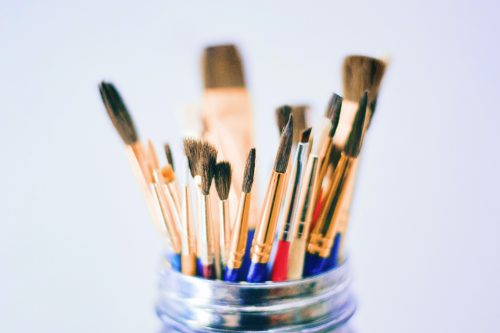
Anyone who has ever made a painting just for fun and then switched to something more serious has noticed how stark the difference in difficulty can be. There’s no doubt about it – painting well is a skill that needs to be learned and refined. While this post can’t save you the hours of practice needed before you craft the masterpiece of your dreams, it will provide some clear and easy tips to help you get started in this field.
1. It’s fine to start simple
Nobody’s expecting your first few paintings to be out of this world – and you shouldn’t put this kind of pressure on yourself, either. There’s nothing wrong with starting simple: e.g. drawing a basic object/shape, or just choosing to paint by numbers. Simple tasks will help you master the basic motor skills and give you a feeling for the instruments, while more detailed and complex plans can always be tackled with time. Just enjoy yourself!
2. Keep a reference at hand
If you’re painting based on an existing object/setting/being, it really helps to have a reference at hand. This might be a photo, video – even a basic sketch. So when you need to check certain details of the target, you can get it right the first time and avoid painting over mistakes. Some beginner artists go as far as tracing the outlines of their target object, then filling in the colors. If necessary, the sketches can become a more permanent fixture of the piece after a layer of gloss is applied.
3. Consider making an underpainting first
You’ve probably heard about people creating sketches on the canvas and painting over them, but have you heard about underpainting? This is an approach that involves creating an outline with paint (not a pencil as with sketches). Essentially, you create the main shape that’ll serve as the core of your piece. It’ll be covered by finer lines and more precise color combinations later as you paint, but until you get there, you have another helpful reference.
4. Remember to take breaks
This tip might seem counterintuitive due to the fast drying time of acrylic paints, but there’s wisdom in it. Taking short breaks can let you blow off any frustration with a slow pace of painting and give you new angles and perspectives when you get back to the process. You can also use this downtime to think about new techniques that might be implemented. It’s recommended to step away when you know that there’s no danger of painting segments being mismatched – due to layers with different density drying time.
5. Don’t forget to clean up after
If you plan to continue painting after your piece of artwork is done, you should take good care of your gear – especially the brushes. That’s why it’s just common sense to clean them after each use, which includes soaking them, extracting any remaining paint (e.g. with a pinch), and drying. The same general approach goes for other tools that get paint on them: if they’re reusable, warm/hot water will remove any extra marks.
Interesting Related Article: “How To Relax After a Difficult Day at the Office“

